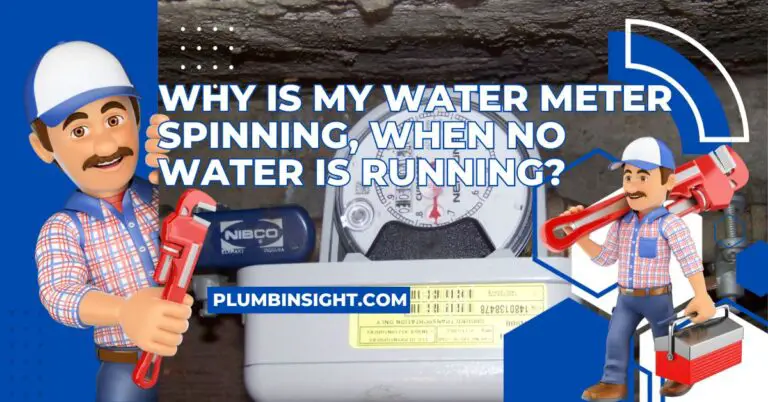Can’t Find AC Drain Pipe Outside; What Should You Do?
Struggling to locate your AC drain pipe outdoors? Don’t worry, you’re not alone. A missing drain pipe can lead to water leakage and potential issues. In this blog post, we’ll offer simple solutions to help you find your AC drain pipe, ensuring your cooling system works efficiently and your home stays dry.
Table of Contents
How do I identify a AC drain pipe?

An AC drain pipe is typically a white or gray PVC pipe, around 1 inch in diameter, originating from the indoor unit of your air conditioner. It carries condensed water produced during cooling. Follow the pipe from the indoor unit to the outdoor unit; it exits the building near the outdoor unit, often close to the ground.
When the AC is running, water drips from this pipe. Look for condensation forming on the outside of the pipe during humid weather. Consult your AC manual for guidance. If unsure, a professional HVAC technician can help you locate and verify the AC drain pipe.
How far should ac drain line be from house?
The AC drain line should extend a distance of at least 3 feet away from your house. This helps prevent water from pooling near the foundation, which could lead to water damage or structural issues. Make sure the drain line slopes slightly downward to ensure proper drainage and avoid stagnant water.
Keeping the drain line a sufficient distance away from the house helps maintain the integrity of your foundation and prevents potential moisture-related problems. Regularly inspect the area around the drain line to ensure it remains clear and properly directed away from your home.
Can’t Find AC Drain Pipe Outside’ Now what?

If you can’t find the AC drain pipe outside, you might want to try these simple steps:
- Check Inside: Look around the inside unit of your air conditioner. The drain pipe usually starts from there, so make sure it’s connected and not clogged.
- Follow the Line: If you can, follow the air conditioning pipes from inside to outside. The drain pipe should connect to one of these pipes.
- Underneath the Unit: Sometimes the drain pipe might be underneath the outdoor unit. Check around the bottom of the unit to see if you can spot it.
- Look for Drips: Turn on the AC and wait a bit. If you see water dripping somewhere around the outdoor unit, that’s likely where the drain pipe is.
- Get Help: If you’re having trouble finding the drain pipe, it might be a good idea to call a professional AC technician. They can locate it easily and fix any issues.
Remember, the drain pipe is important because it removes water that the AC creates. If it’s not working properly, it could cause problems.
Does My Landlord Have To Reglaze My Tub? All You Need To Know
plumbinsight.com
Why doesn’t my AC have a drain?
The majority of contemporary window air conditioners produce condensation, which drips to the pan at the base of the device. As was the case with window AC units of an earlier generation, there are no drain holes or plugs used to remove the water. The fan sling disperses the water as it accumulates and throws it up against the condenser.
So your AC might not have a visible drain for a few reasons:
- Evaporative Cooling
Some air conditioning systems, like evaporative coolers, don’t produce condensed water. Instead, they use the evaporation process to cool air, which doesn’t create excess water that needs to be drained.
- Built-In Drainage
Modern AC units often have built-in mechanisms to manage condensation. They might evaporate the water automatically, reducing the need for a visible drain.
- Internal Drain Pan
Some AC units have an internal drain pan that collects condensed water. This pan might have a hidden drain connected to it, leading the water outside without a visible pipe.
- Gravity Drainage
In some setups, the AC unit is positioned in a way that allows gravity to naturally drain the condensed water without the need for a separate drain pipe.
- Alternative Drainage System
Certain AC systems use alternative methods to manage water, such as pumping it to a remote location or using it for other purposes, like irrigation.
- Hidden Design
The drain might be concealed within the design of the unit or the building’s structure, making it less noticeable.
Remember that even if you can’t see a drain, your AC likely has a way to manage condensed water. If you’re concerned about moisture buildup or potential issues, it’s a good idea to consult your AC’s manual or reach out to a professional HVAC technician for guidance.
How to unclog your car AC drain line
Can AC condensate drain outside?

Yes, AC condensate drains outside. The condensate, which is the water that forms as a result of the cooling process in your air conditioner, is collected and drained outside to prevent it from causing damage or flooding indoors. This is typically done through a drain line or pipe connected to the indoor unit of the AC system.
The drain line carries the condensate to an outside location, where the water is released safely away from your home’s interior. It’s important to ensure that the AC condensate drain line is clear and properly functioning to avoid water-related issues and maintain the efficiency of your air conditioning system.
Propress Fitting Failures: Understanding Causes and Prevention
plumbinsight.com
Air conditioner drain line outside house dripping; what to do?
If your air conditioner’s drain line outside the house is dripping, it could indicate a clog or blockage in the line. This might cause water to back up and leak. Here’s what you can do:
- Turn Off the AC: To prevent further water leakage, turn off your air conditioner.
- Check for Clogs: Inspect the drain line for any visible clogs or debris. Clear away any blockages carefully using a soft brush or by flushing the line with water.
- Unclog with Vinegar: If you suspect a buildup of algae or mold, you can pour a mixture of vinegar and water down the drain line to help dissolve the clog.
- Call a Professional: If you’re unsure or unable to clear the clog yourself, it’s best to contact a professional HVAC technician. They can assess the situation, clear the clog properly, and ensure your AC is functioning correctly.
Regular maintenance, such as cleaning the drain line, can prevent such issues. If the problem persists, seeking professional help is recommended to avoid further damage.


